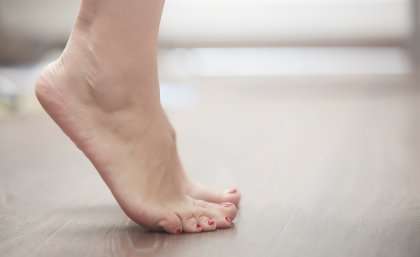Learning to improve foot control in cerebral palsy

A device to measure foot control is being trialled to improve walking ability for adolescents and young adults with cerebral palsy.
Shari O'Brien, a researcher from The University of Queensland's School of Human Movement and Nutrition Sciences is assessing if the device combined with ankle training will reduce tripping and injuries caused from poor muscle control and coordination.
"Our aim is to improve the ability of those with cerebral palsy to walk without fear of falling and improve their quality of life and independence," Ms O'Brien said.
"Previous research on muscle mechanics and walking ability in both children and adults with cerebral palsy shows that foot control during walking is a significant factor which can affect and reduce independence.
"The ability to use the muscles which control ankle movement can be reduced by as much as 50 per cent in people with cerebral palsy."
Current rehabilitation often focuses on addressing the changes which occur to muscles, including spasticity and reduced muscle volume and strength.
"While this is beneficial to walking, there is little understanding of both the role of the nervous system in impairment and how well it can learn to improve joint control," Ms O'Brien said.
"This has led me to design new equipment and a training program to promote learning for ankle control and to better understand the nervous system."
Cerebral palsy is the largest contributor to childhood disability, with an estimated 34,000 people living with cerebral palsy in Australia.
Ms O'Brien is looking for individuals aged 15 to 25 who have a diagnosis of spastic cerebral palsy and are able to walk independently to participate in the study (with or without an aid).
The study consists of six weeks of progressive supervised training including assessments on foot control during walking and while performing tasks in the custom designed ankle device.
"The device has been designed to teach the brain to use muscles at the right time with the right amount of force in a progressive manner," Ms O'Brien said.
"What I'm most interested in is looking at how well this can improve users' ability to lift the toes while walking."
To participate in the study or find out more contact Shari O'Brien on s.obrien12@uq.edu.au or +61 451 297 485.




















